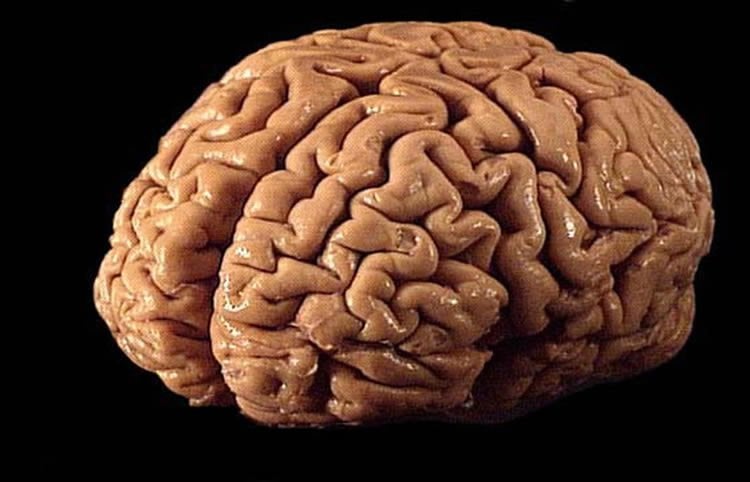Proof-of-concept study provides roadmap for future research into possible associations between brain volume measures and known genetic risk factors.
Over the last decade, important contributions to our understanding of schizophrenia have come from two different types of studies.
Neuroimaging studies have found that certain parts of the brain, such as the hippocampus and amygdala, are smaller in people with schizophrenia – a devastating psychiatric illness with high heritability. At the same time, large genome-wide association studies (GWAS), which analyzed gene sequences from thousands of people, have found evidence suggesting that schizophrenia arises from the combined effects of many genes and not from a defect in any single gene.
Combining these two approaches was a logical next step. A new study led by Patrick F. Sullivan, MD, FRANZCP, a researcher and professor at both the University of North Carolina School of Medicine and the Karolinska Institutet in Stockholm, Sweden, evaluated the relationship between common genetic variants implicated in schizophrenia and those associated with subcortical brain volumes.
The study, which was a large-scale, global collaboration involving nearly 600 researchers from more than 350 institutions, was published online ahead of print by the journal Nature Neuroscience on Monday, February 1, 2016.

“In our study, we integrated results from common variant studies of schizophrenia and volumes of several brain structures,” Sullivan said. “We did not find evidence of genetic overlap between schizophrenia risk and subcortical volume measures, either at the level of common variant genetic architecture or for single genetic markers.
“However, this proof-of-concept study defines a roadmap for future studies investigating the genetic covariance between structural/functional brain phenotypes and risk for psychiatric disorders,” Sullivan said.
At UNC, Sullivan is Yeargan Distinguished Professor of Genetics and Psychiatry and Director of Psychiatric Genomics. At Karolinska Institutet he is Professor of Psychiatric Genetics in the Department of Medical Epidemiology and Biostatistics. He is also the founder and the lead principal investigator of the Psychiatric Genomics Consortium, the largest consortium in the history of psychiatry.
Funding: This research was supported by several funding bodies and medical companies, including the U.S. National Institutes of Health, the European Union’s Seventh Frame Programme, the Welcome Trust, UK, and the Swedish Research Council (full list in the article). Researchers from institutions in the following countries contributed to the study: Austria, Australia, Belgium, Bulgaria, Canada, China, Czech Republic, Denmark, Estonia, Finland, France, Germany, Hungary, Ireland, Italy, Israel, Japan, Lithuania, Netherlands, Nigeria, Norway, Poland, Russia, Sweden, UK, USA.
Source: Tom Hughes – UNC Health Care
Image Credit: The image is credited to Allan Ajifo and is licensed CC BY 2.0
Original Research: Abstract for “Genetic influences on schizophrenia and subcortical brain volumes: large-scale proof of concept” by Barbara Franke, Jason L Stein, Stephan Ripke, Verneri Anttila, Derrek P Hibar, Kimm J E van Hulzen, Alejandro Arias-Vasquez, Jordan W Smoller, Thomas E Nichols, Michael C Neale, Andrew M McIntosh, Phil Lee, Francis J McMahon, Andreas Meyer-Lindenberg, Manuel Mattheisen, Ole A Andreassen, Oliver Gruber, Perminder S Sachdev, Roberto Roiz-Santiañez, Andrew J Saykin, Stefan Ehrlich, Karen A Mather, Jessica A Turner, Emanuel Schwarz, Anbupalam Thalamuthu, Yin Yao, Yvonne Y W Ho, Nicholas G Martin, Margaret J Wright, Schizophrenia Working Group of the Psychiatric Genomics Consortium, Enigma Consortium, Michael C O’Donovan, Paul M Thompson, Benjamin M Neale, Sarah E Medland and Patrick F Sullivan in Nature Neuroscience. Published online February 1 2016 doi:10.1038/nn.4228
Abstract
Genetic influences on schizophrenia and subcortical brain volumes: large-scale proof of concept
Schizophrenia is a devastating psychiatric illness with high heritability. Brain structure and function differ, on average, between people with schizophrenia and healthy individuals. As common genetic associations are emerging for both schizophrenia and brain imaging phenotypes, we can now use genome-wide data to investigate genetic overlap. Here we integrated results from common variant studies of schizophrenia (33,636 cases, 43,008 controls) and volumes of several (mainly subcortical) brain structures (11,840 subjects). We did not find evidence of genetic overlap between schizophrenia risk and subcortical volume measures either at the level of common variant genetic architecture or for single genetic markers. These results provide a proof of concept (albeit based on a limited set of structural brain measures) and define a roadmap for future studies investigating the genetic covariance between structural or functional brain phenotypes and risk for psychiatric disorders.
“Genetic influences on schizophrenia and subcortical brain volumes: large-scale proof of concept” by Barbara Franke, Jason L Stein, Stephan Ripke, Verneri Anttila, Derrek P Hibar, Kimm J E van Hulzen, Alejandro Arias-Vasquez, Jordan W Smoller, Thomas E Nichols, Michael C Neale, Andrew M McIntosh, Phil Lee, Francis J McMahon, Andreas Meyer-Lindenberg, Manuel Mattheisen, Ole A Andreassen, Oliver Gruber, Perminder S Sachdev, Roberto Roiz-Santiañez, Andrew J Saykin, Stefan Ehrlich, Karen A Mather, Jessica A Turner, Emanuel Schwarz, Anbupalam Thalamuthu, Yin Yao, Yvonne Y W Ho, Nicholas G Martin, Margaret J Wright, Schizophrenia Working Group of the Psychiatric Genomics Consortium, Enigma Consortium, Michael C O’Donovan, Paul M Thompson, Benjamin M Neale, Sarah E Medland and Patrick F Sullivan in Nature Neuroscience. Published online February 1 2016 doi:10.1038/nn.4228






